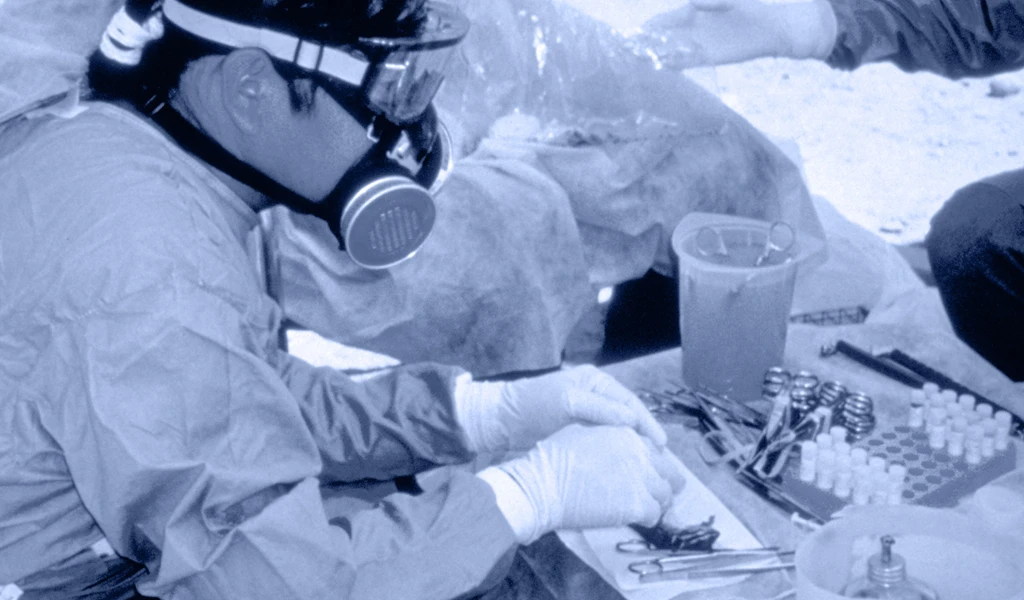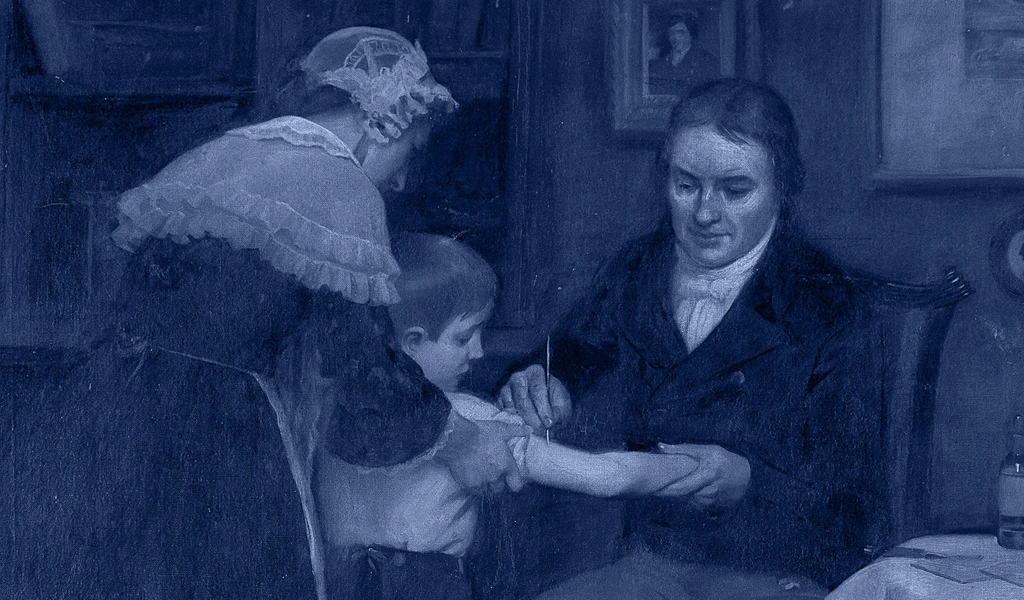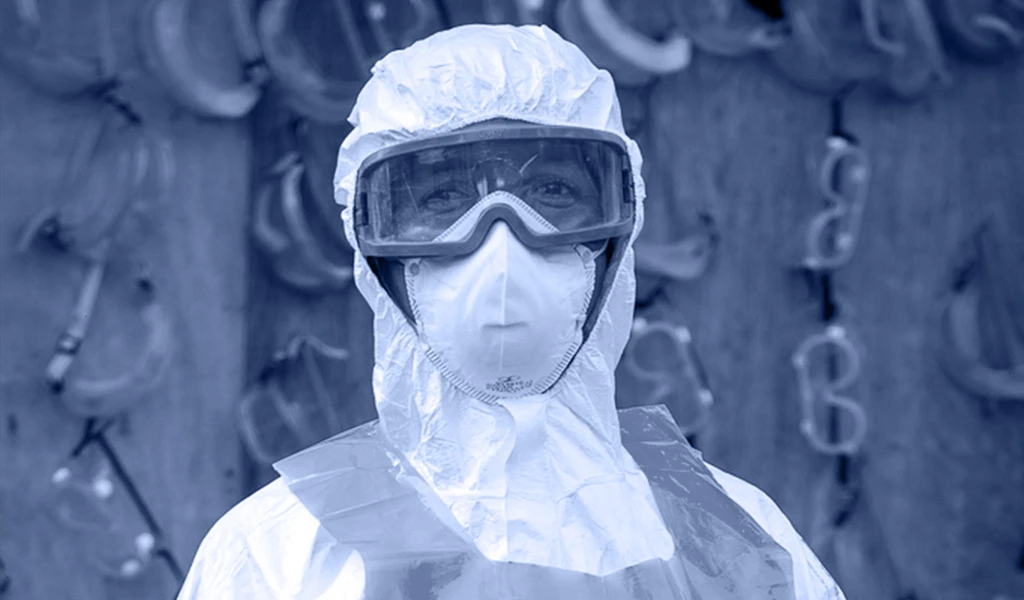The Viral Most Wanted: The Matonavirus and Togavirus Families

It was in 1941 that the former army captain and specialist paediatric ophthalmologist Norman Gregg noticed something very worrying. The Australian doctor was seeing an alarming number of cases of children with cataracts and numerous birth defects—and they had come directly after a large outbreak of the viral disease Rubella.
The disease had been identified more than a century earlier but was generally viewed as a common infection. It caused a rash and fever, but the prevailing belief was that just about every child would contract it and most likely recover.
Gregg's keen observations, however, changed all that. After deeper investigations found that Rubella infection could pass from a pregnant woman to her unborn child and cause devastating effects—deafness, blindness, heart disease and developmental impairments —the hunt was on to find a way of stopping circulation of this virus as soon as possible.
Rubella was classified for decades as one of around 30 viruses that make up the Togavirus family, one of The Viral Most Wanted. Now, however, it has been reclassified into a new viral family, the Matonaviruses, which also joins The Viral Most Wanted list.
Disease detectives have uncovered much about these two families. Read on for more about their investigations into how we can stop human Matonaviruses and Togaviruses from becoming deadly pandemic threats.
One Big Close-Knit Family?
Not exactly. Until recently, the Togavirus family had two distinct sub-groups: the Alphaviruses and the Rubiviruses. While the two sub-groups were related, they had very little in common and were not at all close. Then, in a recent update to the International Committee on Taxonomy of Viruses—a group charged with categorising the multitude of known viruses—the Rubivirus group was split out into the Matonavirus family.
Prime Suspects
In the Rubivirus group within the Matonaviruses, the Rubella virus is the prime suspect in terms of posing a human epidemic threat.
In the Alphavirus group within the Togaviruses, there is a long list of suspects - including Chikungunya virus, O'nyong-nyong virus, Ross River virus, Barmah Forest virus, Semliki Forest virus, Sindbis virus, Mayaro virus, Eastern Equine Encephalitis virus, Venezuelan Equine Encephalitis virus, and Western Equine Encephalitis virus.
Nicknames and Aliases
The Matonavirus family was named after George de Maton, who in 1814 first distinguished Rubella from measles and scarlet fever. The name Rubella is from the Latin meaning "little red", and describes the small red spots that make up the skin rash in those infected. Rubella also goes under the name "German Measles".
The Togaviruses got their family name from the Latin word for a cloak or covering—Toga—which describes how they are enveloped in a membrane of fatty molecules, otherwise known as lipids.
Chikungunya comes from a word in the Kimakonde language of southern Tanzania that means "to become contorted", describing how the disease's victims suffer from the severe joint and muscle pain it inflicts.
Chikungunya virus disease took on another alias during an outbreak in June 2011 in Brazzaville, Republic of Congo. The outbreak infected around 8,000 people who dubbed the disease "robot malaria" because of the way it affects its victims' posture and movement.
The rare but deadly Eastern Equine Encephalitis, Venezuelan Equine Encephalitis, and Western Equine Encephalitis group of Togaviruses are often referred to by the acronyms EEEV, VEEV and WEEV.
Distinguishing Features
Matonaviruses and Togaviruses are extremely small—about 70 nanometres across, compared with a human hair being around 70,000 to 10,000 nanometres thick. They are encased in a protein shell and appear as tiny spheres covered by a lipid membrane. Embedded on the surface of the membrane are multiple minuscule spikes of about six nanometres in length.
Modus Operandi
Matonaviruses and Togaviruses enter and infect human cells by attaching to specific receptors on a cell's surface. Chikungunya, Ross River, Mayaro and O'nyong nyong viruses—which are all from the Alphavirus side of the Togavirus family—invade host cells by fusing with a protein known as Mxra8, which is found on a range of human cell types, including skin cells and immune cells.
The Rubella virus infects human cells by binding to different receptors, including one known as myelin oligodendrocyte glycoprotein, or MOG.
Scientists are still working on identifying exactly how EEEV, WEEV and VEEV attach to and infect human cells. In a recent investigation conducted using new gene-editing technology known as CRISPR-Cas9, researchers found that a receptor on human cells used by another Togavirus, Semliki Forest Virus, is also compatible with two other viruses in the Togavirus family, EEEV and Sindbis virus.
Accomplices
Togaviruses from the Alphavirus group, such as Chikungunya and EEEV, are carried and spread by mosquitoes, ticks or other flying vectors.
In the Matonavirus family, Rubella is spread via airborne droplets when an infected person coughs and sneezes.
Common Victims
Rubella virus exclusively infects people and does not infect other animals or other organisms.
Because viruses on the Alphavirus side of the Togavirus family are carried by mosquitoes, flies, ticks and other flying vectors, they also infect cows, birds, horses and other animals as well as people.
Infamous Outbreaks
Chikungunya
Chikungunya virus was first identified in Tanzania in the 1950s. Since then the disease has caused infections and deaths in many countries in Africa and Asia. Most recently it has extended its infectious reach into Europe and the Americas as climate change has opened up new habitats for its main carriers — Aedes mosquitos — to thrive.
In 2004, the Chikungunya virus emerged in Kenya and spread in an explosive outbreak, causing a human disease epidemic across several countries in and around the Indian Ocean, including the Seychelles, Mauritius, Madagascar and eventually also India. Many millions of people were infected during the 2004 to 2007 outbreak, and because health systems in many of the affected countries were weak, the Chikungunya outbreak put enormous strain on them. Imported cases from this epidemic—the largest Chikungunya outbreak so far recorded—were subsequently detected in other parts of Asia as well as in Australia, the United States, Canada and Europe.
In 2007, an outbreak of Chikungunya virus infections emerged for the first time in Europe, in Italy. Then France reported cases of the disease in 2010 and 2014. And in late 2013, Chikungunya emerged in the Caribbean and quickly spread in the Americas, leading to more than more than 1.2 million cases being reported to Pan American Health Organization in the Americas during 2013 and 2014. This year, 2023, a large and deadly outbreak of Chikungunya has erupted in Paraguay, Brazil, Argentina and Bolivia, so far infecting more than 300,000 people and killing 300 of them.
Eastern Equine Encephalitis Virus
Eastern Equine Encephalitis Virus is rare in people but highly pathogenic, getting into the brain and causing severe encephalitic disease. One of the most severe human outbreaks in the United States of EEEV was during 2019. Among 38 confirmed cases, 15 were deadly — giving a case fatality rate of almost 40 percent.
Rubella
Rubella was endemic worldwide before an effective vaccine was developed in the mid-1960s and deployed widely beginning in the early 1970s. Before this widespread immunisation, there were regular epidemics of Rubella virus every six to nine years, with the most vulnerable age group being children from four to nine years old.
Among the most notorious Rubella outbreaks in the United States was from 1964 to 1965, when an epidemic of the virus infected 12.5 million Americans, an estimated one in 15 of the U.S. population. The epidemic led to more than 11,000 stillbirths, miscarriages and abortions among women had been infected while pregnant and the 20,000 or more babies born with congenital abnormalities in the wake of the outbreak became known as "Rubella babies".
Common Harms
The Equine Encephalitis subgroup of viruses on the Alphavirus side of the Togavirus family that include EEEV, WEEV and VEEV are often deadly in horses and mules. Although human cases are thankfully rare, EEEV and its sibling viruses can be highly pathogenic in people and can have fatality rates of up to 70 percent. As many as half of those who survive infection with EEV can suffer permanent neurological symptoms. Babies and very young children have the highest risk of developing neurological complications, including seizures, depression, paranoia, hearing loss, anxiety, speech disorders and intellectual defects.
The most common symptoms of Chikungunya infection are sudden fever, chills, rash, nausea, sensitivity to light, and severe, sometimes incapacitating, joint pain. The disease can be deadly in some severe cases, and in many cases causes pain that can last months or even years. While most patients recover, lasting complications can include chronic arthritis and repeated or ongoing bouts of joint pain, which can lead to long-term disability and have substantial economic consequences.
Rubella is highly contagious and causes a rash and fever and is generally mild. But the disease is very dangerous when it infects women during pregnancy, where it causes Congenital Rubella Syndrome and can result in severe birth defects in newborns.
Lines of Enquiry
Fortunately, disease detectives have made great progress in their search for ways to defend people against the prime suspect in the Matonavirus family. In 1964, working in his Wistar Institute laboratory, the vaccinologist (and now a scientific advisor to CEPI) Stanley Plotkin invented the world's first Rubella vaccine. The vaccine is now administered in many countries as a single shot in routine childhood immunisation programmes, or as part of the triple shot MMR (Measles, Mumps and Rubella) immunisation. While use of the vaccine has dramatically reduced Rubella infections worldwide, poverty, conflict and weak health systems in some countries mean it is still not being accessed by everyone. There are still more than 100,000 children born with Congenital Rubella Syndrome each year.
Among the Alphavirus group within the Togavirus family, progress in the 75 years since Chikungunya disease was first discovered was initially slow but has picked up dramatically in recent years. Multiple lines of enquiry against Chikungunya and its relatives have been pursued by scientific researchers around the world, leading to a wide range of promising preclinical and clinical vaccine candidates being developed. Among those are three vaccine candidates being developed with support from CEPI and the European Commission, including a live-attenuated Chikungunya vaccine candidate from the French pharmaceutical company Valneva. This vaccine is on track to become the world's first licenced Chikungunya vaccine.
Also on the Alphavirus side of the Togavirus family, scientists are working to develop human vaccines against the three Equine Encephalitis viruses EEEV, VEEV and WEEV. One line of enquiry has involved taking antibodies from the blood of human survivors of EEEV to investigate which ones are able to neutralise EEEV infection and could therefore be used as a basis for a monoclonal antibody therapy or vaccine.
Editor's note:
The naming and classification of viruses into various families and sub-families is an ever-evolving and sometimes controversial field of science. As scientific understanding deepens, viruses currently classified as members of one family may be switched or adopted into another family, or be put into a completely new family of their own. CEPI's series on The Viral Most Wanted seeks to reflect the most widespread scientific consensus on viral families and their members, and is cross-referenced with the latest reports by the International Committee on Taxonomy of Viruses (ICTV)


